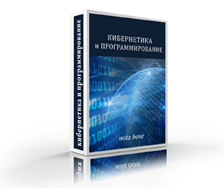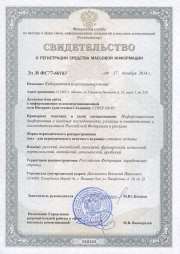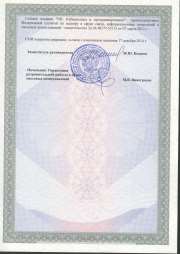MAIN PAGE
> Journal "Cybernetics and programming"
> Contents of Issue є 04/2016
Contents of Issue є 04/2016
|
Methods, languages and forms of human-computer interaction |
|
Tregubov A.S. - Develoloping User Interface Adaptive Methods for USSD Services
|
|
pp. 1-10
|
DOI: 10.7256/2306-4196.2016.4.19497
Abstract: The growth of a number of electronic devices and their capacities trigger the development of recommendation systems in general and adaptive interfaces in particular. Such systems collect information about user experience and analyze obtained data using the methods of machine-aided learning. Not ony the number of devices is growing, so is the number of users who often have different needs and demands. The author of the article pays special attention to the interface of USSD services. The purpose of the research is to develop an approach alllowing to decrease the average number of demands made by users while working with the text menu. To find a relevant solution, the author applied the methods of systems analysis and discovered a strong dependence between needs of each user and his/her context. Using the information about the execution context allowed to improve the existing methods and obtain better results. The author's approach is based on the two-stage clusterization: interface clusterization at the first stage and context clusterization at the second stage. To carry out testing the author used data collected during interaction with the users of USSD-services.

|
Stepanov P.P. - Solving Topical Issues of Oil Companies Using the Game Theory Method
|
|
pp. 11-17
|
DOI: 10.7256/2306-4196.2016.4.20162
Abstract: The subject of the research is the problems of information security as well as development of the competitive strategy on the market of oil products for oil companies and implementation of the game theory method in the process of solving the aforesaid issues. Special attention is paid to the questions of providing information security. The author explaines the role of strategic interaction in the process of planning and developing company's competitive strategy. After that the author introduces the framework of the game theory in a form of a target function with a set game matrix which alllows to carry out simulation modeling when the actual basis is accumulated. The research methodology is based on the framework of the game theory, in particular, constant sum games, cooperative games and games with inexact information. The main conclusion of the research is the proof that it is possible to apply the game theory method to solving specific problems of oil industry. The author also offers to use the target function to fill in the game matrix for each problem and defines directions for further researches in this field using the game theory and simulation modeling methods.

|
Educational software systems |
|
Nekhaev I.N., Zhuykov I.V. - Decision Making Modelos in Intelligence Systems of Testing Competency Levels
|
|
pp. 18-34
|
DOI: 10.7256/2306-4196.2016.4.19863
Abstract: The article is devoted to the question whether it is possible to execute modeling and computer-aided evaluation of students' competency levels based on the analysis of their decisions. The emphasis is made on the method of constructing the structure of complicating of routine tasks and operational space of potential solutions. Based on the preset operational space, the authors of the article suggest to create expert agents which solutions will serve as the basis for further analysis of rationality and completeness of students' decisions. As a result of the students' decision anaylsis, the authors develop their competency map. The level of competency is defined by the difficulty of routine tasks soloved by students as part of the given knowledge module. The research involves modeling particular components of the decision making process and interaction methods when making a decision about the level of students' competency. The main conclusions of the research are the following. Firstly, the aforesaid model of the decision operational space, on the one hand, limits a possible set of applicable basic operations and enables formulation and logging of users' decisions by the testing system and, on the other hand, gives freedom to students in the process of constructing potential decisions. Secondly, the array of routine task complication constitutes a good basis for constructing the competency map of a student in a form of an overlay model, allows to model and evaluate the level of competency in accorance with the level of difficulty of tasks being solved, and enables to arrange for adaptive testing that takes into account individual features of students. Thirdly, the data structures introduced in the operational space of decision making can be adjusted in accordance with the incoming information in order to be adequate. The models reviewed create a good basis for implementing multiagent and neural network paradigms for programming intelligence systems of testing.

|
Virtual worlds and virtual reality systems |
|
Sobolev V.E. - Computer Simulation of Physical Processes with Multi-dimensional Time
|
|
pp. 35-43
|
DOI: 10.7256/2306-4196.2016.4.20061
Abstract: The artice is devoted to discussing whether it is possible to create a computer simuation of physical processes ongoing within the framework of hypothetic universes where the dimension of time exceeds one unit. This problem is viewed in terms of digital physics assuming that our Universe can be a virtual sumulation operated by a computer program based on initial conditions and a set of algorithms that determine the rules of the Universe evolution. In his research Sobolev analyzes the main evolutionary principles of classical and quantum systems as well as evolutionary principles of hypothetic systems with multidimensional time. The author carries out a comparative analysis of one-dimensional and multi-dimensional time systems and considers the main distinctive features of system evolution within the framework of the multidimensional time of events. The author also views examples of systems with a finite and infinite number of timporal dimensions. The author shows that algorithmization of processes ongoing in multi-dimensional time systems requires logics fundamentally different from logics of the evolution of our physical reality with the time dimension being equal to one unit.

|
Telecommunication systems and computer networks |
|
Sibiryakov M.A., Vasyaeva E.S. - Modification and Modeling of Data Processing Algorithms in Cache Memory of Data Storage Systems
|
|
pp. 44-57
|
DOI: 10.7256/2306-4196.2016.4.18058
Abstract: The present article is devoted to the question about increasing productivity of the cache memory subsystem of data storage systems. The main purpose of the article is to increase the speed of executing the basic algorithms of the information search operation in controlling index structures. The subject of the research is the controlling index tables the execution of the basic algorithms is based on. In their article the authors offer to execute modified data processing algorithms and index based on a unique method of hashing. The authors provide results of the analytical modelling of initial and modified data processing algorithms using the method of Markov chains. The authors evaluate the average performance of these algorithms. They also carry out a computer-aided simulation modelling of the search operation within the data structures under research. Within the framework of the studied method of controlling the cache memory, the authors prove that it is reasonable to use hash tables in order to build controlling index tables that containt a great number of stored messages. The research shows that implementation of hash tables allows to significantly increase the speed of the basic data processing algorithms in the cache memory of data storage subsystems.

|
Suchkova E.A., Nikolaeva Y.V. - Developing the Best Possible Data Storage Structure for Decision Support Systems
|
|
pp. 58-64
|
DOI: 10.7256/2306-4196.2016.4.18281
Abstract: The article presents the results of the development and experimental comparison of data structures and data storage methods. The basis for building the models included the financial market decision support system and expert evaluations of the electronic tendering system. In both cases the authors built conceptual data models, stored data in text files, relational and non-relational databases and evaluated efficiency of an organized structure from the point of view of efficient storage and access, automatic integrity control and data consistency. By using theoretical methods (abstraction, analysis, synthesis, and idealization) the authors developed conceptual database models. In its turn, by using empirical methods (experiment and comparison) they checked the efficiency of data storage with the use of text files, relational and non-relational databases. As the main conclusion of the research, the authors provide recommendations on how to select the best data storage structures for electronic decision support systems. The experimental comparison allowed to discover that for a developed expert evaluation storage structure the relational database control system is the most effective method while in case of storing information about financial markets, it is better to use text files for a developed decision support system.

|
Data encryption and data protection |
|
Gorbunova E.S. - Dynamic Authentication of Users in Learning Management Systems
|
|
pp. 65-72
|
DOI: 10.7256/2306-4196.2016.4.19517
Abstract: The object of the research is the mechanism of dynamic authentification via keystroke dynamics. The author examines reinforced authentification of users in Learning Management Systems whereas e-learning gradually occupying a niche in the education environment. The purpose of the present research is to develop and verify the system of dynamic authentification. Special attention is paid to analyzing biometric authentification and developing architectures of the required system and algorithm for classifying users based on the classifier's parameter learning as well as testing results. The author of the article carried out analysis of methods and algorithms that are used in the field of dynamic authentification and offers his alternative solution of the problem. The main results of the research include: architecture of the user authentification mechanism in Learning Management Systems; and description of the algorithm for dividing users into two classes. In accordance with the obtained requirements for the system, the author implemented the aforesaid mechanism in practice and conducted testing of the mechanism. The test shows that the desired result was obtained for the first- and second-order errors. The mechanism of keystroke dynamic authentification can be used not only in Learning Management Systems but also in other systems similar to the violator's model.

|
Forms and methods of information security administration |
|
Pavlov A.V. - The Method of Defining the SDN Network Configuration Change
|
|
pp. 73-80
|
DOI: 10.7256/2306-4196.2016.4.19516
Abstract: The subject of the research is the analysis of SDN network safety methods. One of such safety methods is the analysis of the current network configuration for a fast determination of changes and upkeep of the authorized status. Today SDN networks are gaining popularity therefore development of protection algorithms for such networks is a necessary step. SDN network approach to data transfer differs from that of traditional networks. Based on that fact, an important research goalo is either to define drawbacks of exisiting algorithms applicable to such networks or to develop new ones. Research goals include analysis of existing algorithms, search for solutions and adaptation of these solutions to initial tasks or development of a new solution. As a result of the research, the author describes a device that would ensure security of SDN network at the level of data transfer disregarding external factors. This would alllow to provide an independent evaluation of network security. When the network is being re-configured, all changes will be automatic or semi-automatic, thus they will not distort the authorized status of the network.

|
Derendyaev D.A., Gatchin Y.A., Bezrukov V.A. - Algorithm for Representation of Residual Risk Mathematical Model
|
|
pp. 81-85
|
DOI: 10.7256/2306-4196.2016.4.19655
Abstract: The majority of modern risk evaluation and management methods imply the concept of residual risk as a figure describing the risk of a threat after all countermeasures have been implemented, however, researchers do not pay enough attention thereto. In this research the authors offer their algorithm allowing to represent the residual risk of information security threats in a form of a mathematical model which in its turn creates opportunities for a more detailed analysis of a parameter under review and the model itself. Coefficients of this model demonstrate the impact of input parameters on the final result. The algorithm of the residual risk mathematical model is based on a complete factorial experiment taking into account peculiarities of a parameter under review. This approach allows to analyze the role of residual risk not only as a figure but also mathematical model which can help to better imply residual risk when implementing risk evaluation and management methods in order to improve an information protection system at an enterprise.

|
Mathematical models and computer simulation experiment |
|
Kalabin A.L., Udalov E.V. - The Regression Method of Reducing the Boundary Equation to the Cauchy Problem When Modeling Chemical Fiber Treatment
|
|
pp. 86-90
|
DOI: 10.7256/2306-4196.2016.4.19735
Abstract: The subject of the research is the numerical method implemented in the exploratory research program system applied during technical procedures of chemical fiber treatment. The aforesaid method allows to execute the selection of indeterminate initial conditions based on determinate boundary conditions, i.e. reduce the boundary equation to the Cauchy problem. The method also includes verification of numerical solutions through calculating the initial equation of force balance. This is a task that appears when solving a set of non-linear ordinary differential equations of second order (mathematical model of chemical fiber treatment) by using the 4th-order Runge-Kutta equation. The authors note that it is possible to apply a determinate shooting method together with dichotomy methods and Newton's (tangent) methods. The authors pay attention to the analysis of the shooting method, in particular, describe dependencies of the method iteration number on some initial conditions, of the initial rate - on the finishing fiber speed. The authors also give an insight into the regression method and compare efficiency of the regression method to the shooting method. The authors give a mathematical description of the process of chemical fiber treatment and select a mathematical model. Based on this model, the author carried out a computing experiment using the shooting method. The analysis of the results of the numerical modeling using the shooting method allowed to offer the regression model. The authors also describe drawbacks of using a determinate shooting method reducing the boundary equation to the Cauchy problem when modeling the process of chemical fiber treatment. The authors define regression equations relating a determinate boundary condition and indeterminate initial condition. The authors offer the regression method that converges by approximately 30 % faster than determinate dichotomy and Newton's methods.

|






